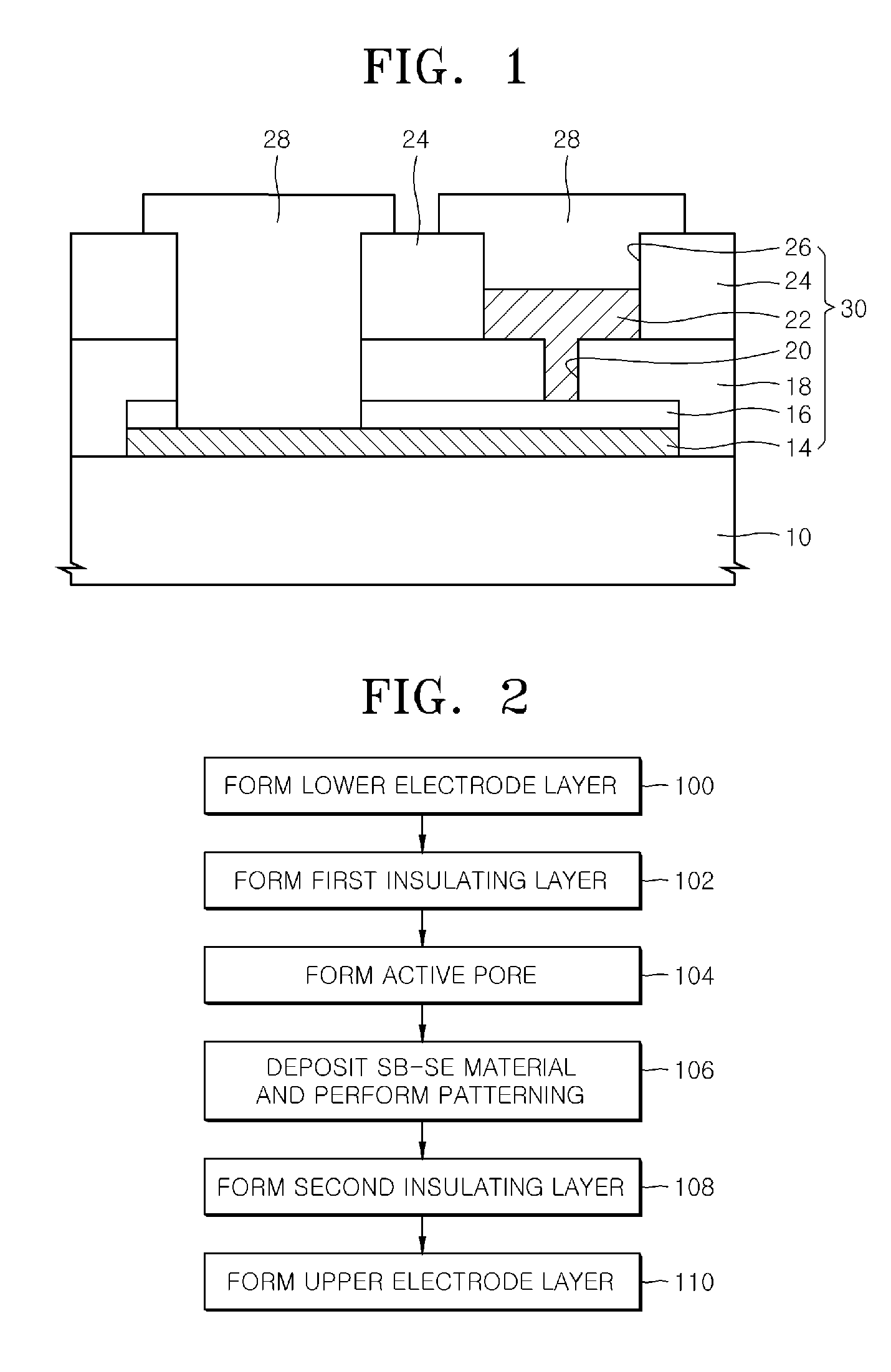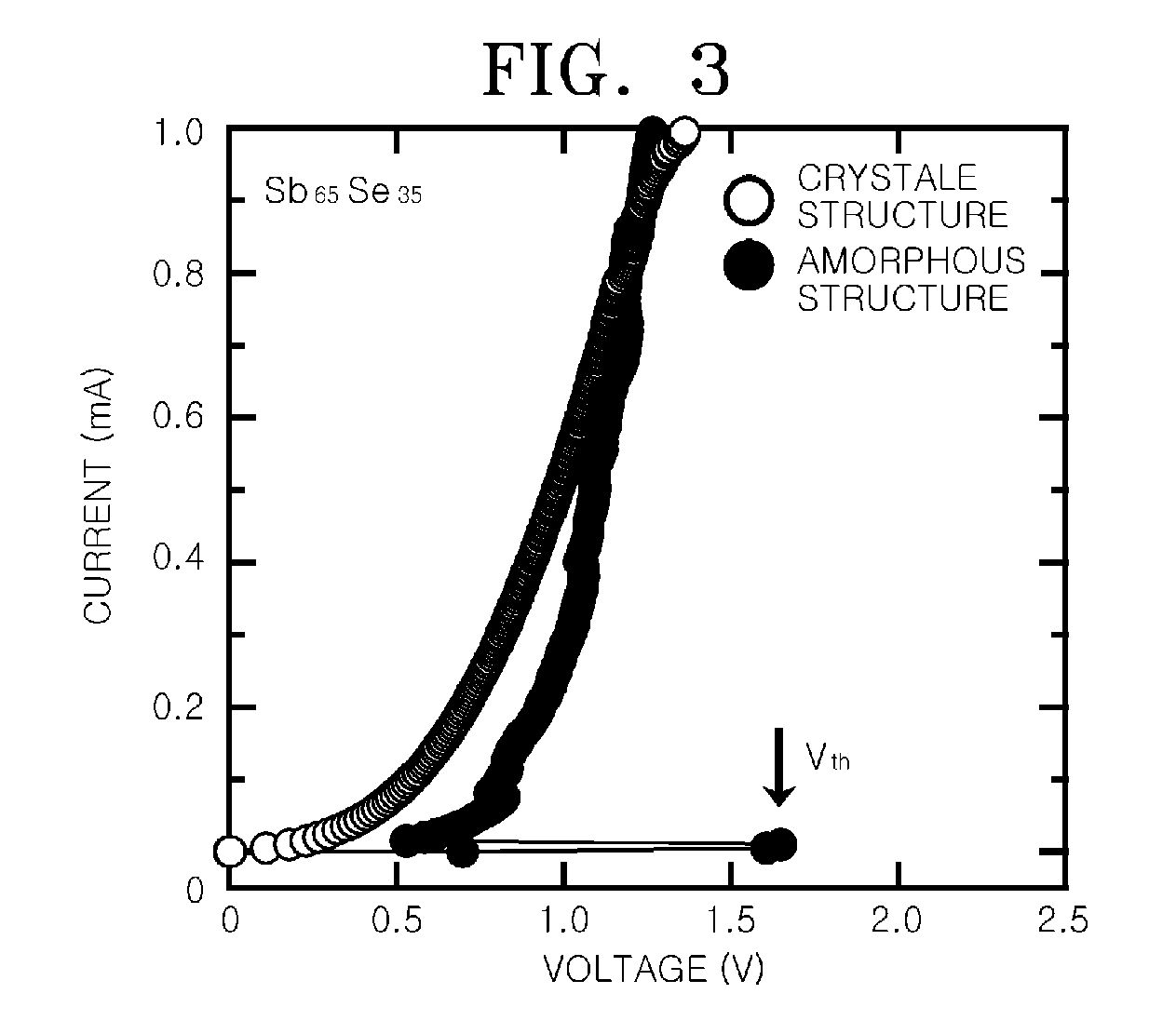Phase-change memory device using Sb-Se metal alloy and method of fabricating the same
a phase-change memory and metal alloy technology, applied in the direction of semiconductor devices, basic electric elements, electrical appliances, etc., can solve the problems of large energy consumption of dram, insignificant power consumption of refresh process, and increase in power consumption, so as to achieve high crystallization speed, low melting point, and high speed
- Summary
- Abstract
- Description
- Claims
- Application Information
AI Technical Summary
Benefits of technology
Problems solved by technology
Method used
Image
Examples
Embodiment Construction
[0044]The present invention will now be described more fully with reference to the accompanying drawings, in which preferred embodiments of the invention are shown. This invention may, however, be embodied in many different forms, and should not be construed as being limited to the embodiments set forth herein. Rather, these embodiments are provided so that this disclosure will be thorough and complete, and will fully convey the scope of the invention to those skilled in the art. In the drawings, the thicknesses of layers and regions are exaggerated for clarity. In addition, when it is described that one layer is positioned ‘on’ another layer or substrate, the layer can be formed directly on the other layer or substrate, or further unspecified intervening layers may be present. Like numbers refer to like elements throughout the specification.
[0045]FIG. 1 is a sectional view illustrating the structure of a phase-change memory device according to an embodiment of the present invention...
PUM
| Property | Measurement | Unit |
|---|---|---|
| width | aaaaa | aaaaa |
| melting point | aaaaa | aaaaa |
| melting point | aaaaa | aaaaa |
Abstract
Description
Claims
Application Information
 Login to View More
Login to View More - R&D
- Intellectual Property
- Life Sciences
- Materials
- Tech Scout
- Unparalleled Data Quality
- Higher Quality Content
- 60% Fewer Hallucinations
Browse by: Latest US Patents, China's latest patents, Technical Efficacy Thesaurus, Application Domain, Technology Topic, Popular Technical Reports.
© 2025 PatSnap. All rights reserved.Legal|Privacy policy|Modern Slavery Act Transparency Statement|Sitemap|About US| Contact US: help@patsnap.com



